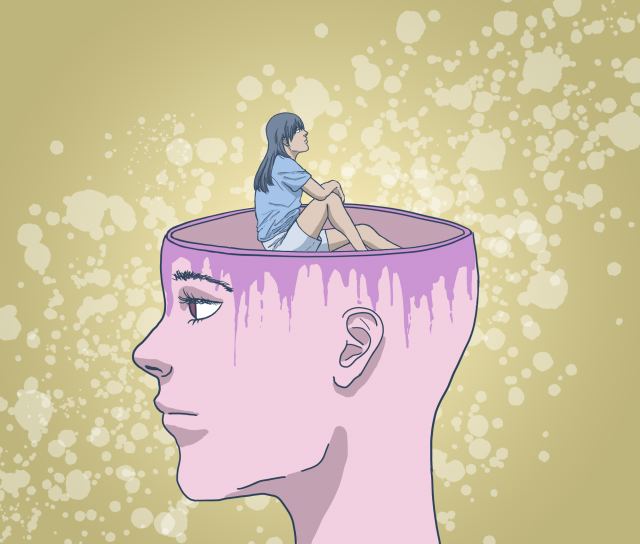Keeping 6 feet of space between you and the neighborhood jogger seems easy enough. But keeping away from friends, family and other loved ones has proven to be much more difficult.
Social distancing is simple in principle – keep 6 feet between you and those around you. No groups, no crowded places.
The reasons for it are simple, too: The Centers for Disease Control and Prevention website explains that COVID-19 spreads primarily from people that are in close contact with one another. Specifically, the website explains how droplets from one person’s mouth or nose can end up in another person’s mouth or nose when they are in these close quarters.
Clearly, in a viral pandemic, this is something we want to avoid. However, even though social distancing has been effective in slowing the emergence of new cases of the virus, it is also worth examining the potential negative side effects – especially those relating to social isolation.
With this in mind, The Quad is looking into different types of social isolation in hopes of avoiding its potentially harmful effects and looking out for those individuals who may be most vulnerable to experiencing them.
Naomi Eisenberger, a professor in UCLA’s psychology department, detailed some of these consequences of social isolation and emphasized the importance of social interaction for us as humans.
“We’re incredibly dependent on others, and so the way that our minds work, the way that our bodies function, is all regulated by our social relationships,” Eisenberger said.
However, what is alarming is what happens when we do not have these relationships.
“Some of the work that sort of demonstrated these strong links between social ties and health, or social ties and sort of life, have shown that people who have fewer social ties … they don’t live for as long, they get sick more quickly,” Eisenberger said. “And some epidemiological studies have shown that the risk factors associated with being socially isolated are similar to smoking 15 cigarettes a day.”
[Related: Medical students adapt to unique challenges posed by lack of in-person learning]
Along with this, the American Psychological Association recognizes that people with pre-existing mental health conditions, older adults and those working in health care may have a higher chance of experiencing some form of psychological distress in these conditions of social distancing, isolation or quarantine. To help with any of these psychological stressors that people may be experiencing, the American Psychological Association also published coping strategies and provided other links to helpful resources during this time.
Clearly, social isolation can be extremely dangerous. However, not all types of social isolation are created equal.
Eisenberger described the difference between subjective and objective isolation, emphasizing that we need not necessarily fear the latter.
Specifically, she said subjective isolation happens when an individual feels a lack of social connection despite the fact that they may be surrounded by people. Objective isolation, on the other hand, means that an individual does not have people around them. Additionally, Eisenberger explained that subjective isolation is more likely to be the culprit for detrimental health consequences.
Thus, it seems that, though many of us are disconnected physically during this period of social distancing, it does not have to mean we are disconnected completely.
After all, 6 feet can quickly turn into 6 inches on any given Zoom call.
However, it is important to remember that social distancing is a largely novel concept, and the research on the effects of mass-scale physical separation is limited. Nevertheless, some researchers have already begun diving into the effects of social distancing as we now experience it.
University of Washington graduate student Adam Kuczynski and his advisor Jonathan Kanter launched a study that surveys 500 adult residents of the King County region during this time of social distancing. The study tracks both how the participants are feeling and what they are doing in an effort to gather information that will provide insight into the public health measures that should be taken now and in the future.
Interestingly, results from the study indicated that people now might be managing the separation better than they were initially. For example, data showed that peoples’ anxiety was leveling off and people were exercising more as time went on.
However, though the good news is encouraging, the study also showed that there are unfortunately some people who are struggling a lot more than others. For example, on a scale of zero to 10 in terms of loneliness, Kanter said in the article that, while some were answering zero, others were answering 10.
[Related: The Quad: Predicting the potential impact of the coronavirus pandemic on the world]
With so much uncertainty, it is easy to worry about the potentially manifold consequences of this unprecedented period and its associated policies. Despite all this, there may also be room for hope.
Eisenberger emphasized that people are resilient, and the period in isolation may be less consequential than we might think.
“People also adjust very quickly, and so it’s also possible that, you know, I think this stay at home is starting to feel a bit more normal,” she said. “It could very well be that when this is all lifted, we could quickly go back to normal people, adjust very quickly to their new situations.”
Though it may not be our most natural state, staying isolated from each other is the healthiest option right now. And while many of us remain separated physically, we can continue to find other ways for us to be there for each other – even from 6 feet apart.

